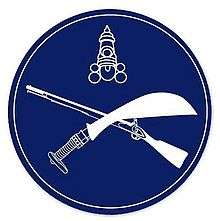Tulu Gowda
 Emblem of Tulu (Dakshina Kannada) and Arebhashe (Kodagu) Vokkaliga Gowdas. | |
| Total population | |
|---|---|
| ((approx) 0.4 million (in South Canara and Kodagu)) | |
| Regions with significant populations | |
| Dakshina Kannada, Coorg, Bangalore, Mysore | |
| Languages | |
| Tulu and Are Bhashe | |
| Religion | |
| Hinduism | |
| Related ethnic groups | |
| Tuluvas, Kodavas, (10Kutumba-18Bali/Ghotra), Vokkaliga, Gowda |
The Tulu Gowda ((Kannada: ತುಳು ಗೌಡ್ರು) Dakshina Kannada and Kodagu Gowda) communities, as their name indicates, hail mostly from those districts. Tulu Gowdas are Vokkaliga community they are speak tulu. Originally they are the migrants from Ikkeri (present Shimoga District). They were originally Natha Pantha and Shivaites owing allegiance to Sringeri Matha. Later Emperor Vishnuvardhana's rule they became Vaishnavites and worship 'Tirupati Timmappa' (Balaji of Thirupati) and 'Sabbakka' (Sharada of Sringeri). They are also called Tuluva Gowdas as they spoke Tulu when they came from Ikkeri, later in the Mysore kingdom, and settled the Mangaluru - Udupi (Dakshina Kannada - Udupi) region. They now speak the Are Bhashe or Gowda Kannada dialect of Tulu and Kannada. They are said to have 10 Kutumba and 18 Balis as their primordial root families, from which arose around a Nooru Mane or hundred families. Concerning the Vokkaligas in the district of Dakshina Kannada & Coorg, Rev. G. Richter, in Gazetteer of Coorg (1870) lists them as Tulu Gowdas (Vokkaligas in Dakshin Kannada and Kodagu) who migrated to Coorg (Kodagu) from the Mangaluru-Udupi (Dakshina Kannada-Udupi) region under the Canarese (Kannada) speaking peoples.
Caste & Marriage System
Gowdas believe that people from same Bali or Gotra cannot marry as they have originated from the same base family. However, cousin marriage between children of brother and sister is accepted (but not between children of two brothers or two sisters). Once married, a girl assumes the okka name of her husband. This community following bari (bali or ghotra) system. He was not married same bari. And he was 'Makkala Kattu' system followed.